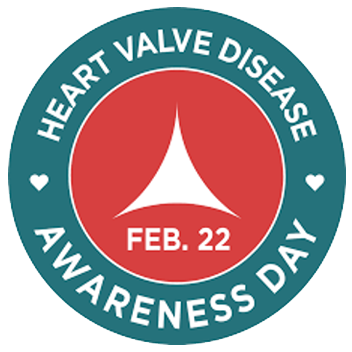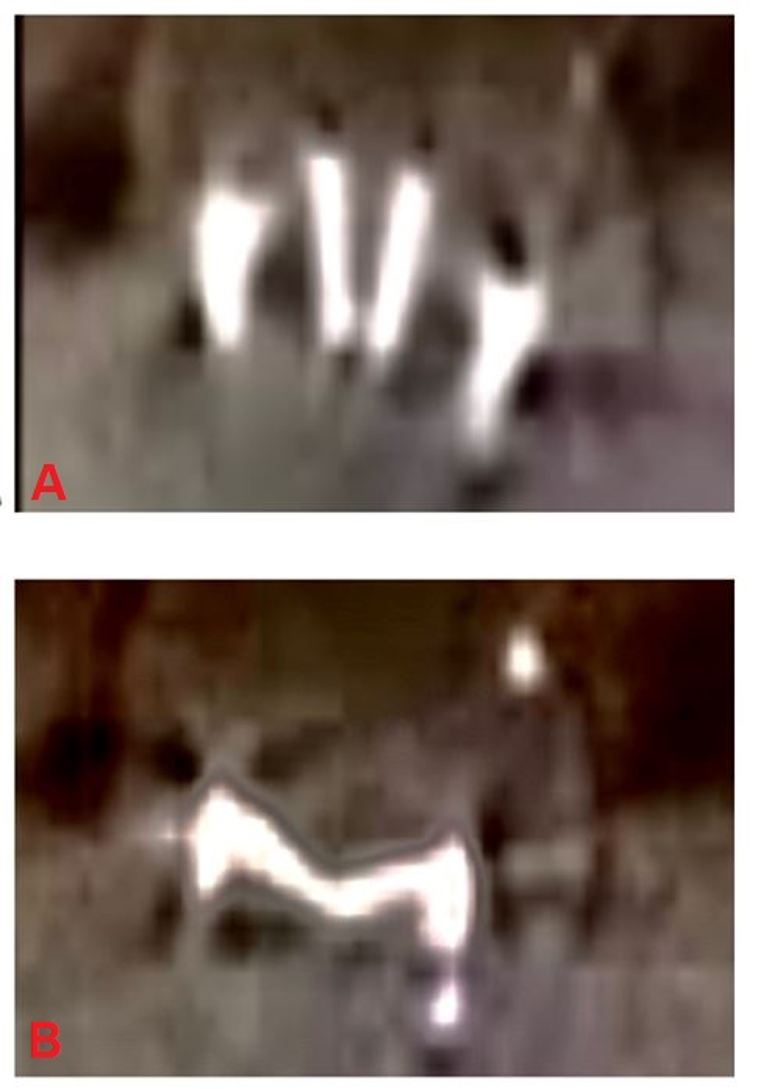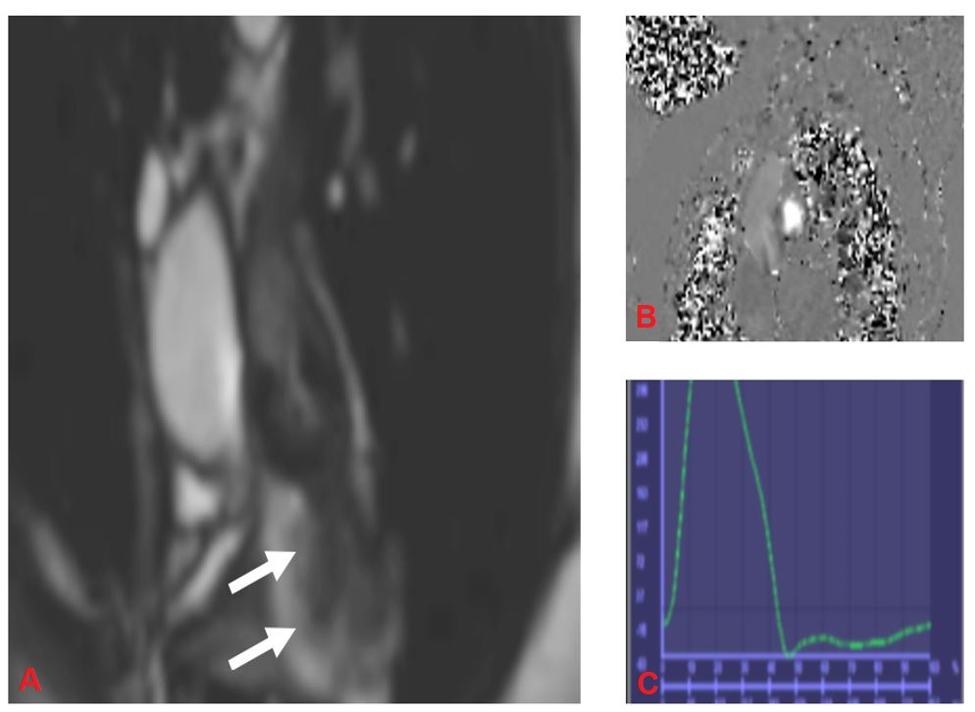Valvular Disease: Role of Other Imaging Modalities
 As part of American Heart Month, and in recognition of National Heart Valve Disease Awareness Day on Feb. 22, the ACC Interventional Section has written a series of articles focused on valvular heart disease, including the role of imaging modalities, emerging trends in transcatheter mitral valve replacement and tricuspid valve repair, and perspectives on novel applications of transcatheter aortic valve replacement. See the entire series on the Invasive CV Angiography and Intervention and Valvular Heart Disease Clinical Topic Collections. For patient resources, check out CardioSmart's Heart Valve Disease Hub and new "Heart Valve Disease Treatment with TAVR" infographic.
As part of American Heart Month, and in recognition of National Heart Valve Disease Awareness Day on Feb. 22, the ACC Interventional Section has written a series of articles focused on valvular heart disease, including the role of imaging modalities, emerging trends in transcatheter mitral valve replacement and tricuspid valve repair, and perspectives on novel applications of transcatheter aortic valve replacement. See the entire series on the Invasive CV Angiography and Intervention and Valvular Heart Disease Clinical Topic Collections. For patient resources, check out CardioSmart's Heart Valve Disease Hub and new "Heart Valve Disease Treatment with TAVR" infographic.In recent years, the use of multidetector computed tomography (MDCT) for the evaluation of valvular heart disease, particularly for transcatheter valve replacement and prosthetic valve disease, has expanded rapidly.1 MDCT is a great imaging modality with better spatial resolution compared with echocardiography and has the ability to assess coronaries and biventricular function simultaneously if needed.2 Success of the transcatheter procedures relies largely on MDCT for annular and device sizing, suitability for the valve-in-valve procedures, and assessment of the valvular anatomy and surrounding structures for contraindications that preclude the procedure.3,4 Post-procedural complications following transcatheter or surgical prosthetic valve replacement can be assessed safely using noninvasive testing like MDCT. MDCT with contrast is utilized routinely for assessing prosthetic valve dysfunction,5 differentiating thrombus and vegetation from pannus,6 and visualizing paravalvular structure for presence of paravalvular leak. Mechanical valve motion can be seen even without contrast by three-dimensional volumetric reconstruction that allows the accurate opening and closing angles of the mechanical leaflets (Figure 1).
Figure 1
The utility of cardiac magnetic resonance imaging (CMRI) has increased exponentially with recent advances in CMRI technology.7 With better temporal and spatial resolution and ability to evaluate the valve from multiple perspectives compared with echocardiography, CMRI provides comprehensive evaluation of valvular structure and overall cardiac and extra cardiac anatomy, direct measurement of valvular flow, particularly regurgitant volume and fraction using phase contrast imaging, and evaluation of biventricular function along with myocardial tissue characterization.8 CMRI plays an important role particularly in right-sided prosthetic valve evaluation9-12 and is used routinely in the congenital population to assess for pulmonary valve or conduit dysfunction along with right-sided volume and function.13 The American Society of Echocardiography and the Society of Cardiovascular Magnetic Resonance recommendations for the noninvasive evaluation of native valvular regurgitation recommend CMRI for valvular regurgitation given the accurate and reproducible measurements that provide diagnostic and prognostic information (Figure 2).14
Figure 2
References
- Doherty JU, Kort S, Mehran R, Schoenhagen P, Soman P. ACC/AATS/AHA/ASE/ASNC/HRS/SCAI/SCCT/SCMR/STS 2017 Appropriate Use Criteria for Multimodality Imaging in Valvular Heart Disease: A Report of the American College of Cardiology Appropriate Use Criteria Task Force, American Association for Thoracic Surgery, American Heart Association, American Society of Echocardiography, American Society of Nuclear Cardiology, Heart Rhythm Society, Society for Cardiovascular Angiography and Interventions, Society of Cardiovascular Computed Tomography, Society for Cardiovascular Magnetic Resonance, and Society of Thoracic Surgeons. J Am Coll Cardiol 2017;70:1647-72.
- Lancellotti P, Pibarot P, Chambers J, et al. Recommendations for the imaging assessment of prosthetic heart valves: a report from the European Association of Cardiovascular Imaging endorsed by the Chinese Society of Echocardiography, the Inter-American Society of Echocardiography, and the Brazilian Department of Cardiovascular Imaging. Eur Heart J Cardiovasc Imaging 2016;17:589-90.
- Abbara S, Blanke P, Maroules CD, et al. SCCT guidelines for the performance and acquisition of coronary computed tomographic angiography: A report of the society of Cardiovascular Computed Tomography Guidelines Committee: Endorsed by the North American Society for Cardiovascular Imaging (NASCI). J Cardiovasc Comput Tomogr 2016;10:435-49.
- Krishnaswamy A, Tuzcu EM, Kapadia SR. Integration of MDCT and fluoroscopy using C-arm computed tomography to guide structural cardiac interventions in the cardiac catheterization laboratory. Catheter Cardiovasc Interv 2015;85:139-47.
- Moss AJ, Dweck MR, Dreisbach JG, et al. Complementary role of cardiac CT in the assessment of aortic valve replacement dysfunction. Open Heart 2016;3:e000494.
- Kassi M, Garg N, Chang SM. Utility of cardiac computed tomography for assessment of prosthetic aortic valve dysfunction with pannus formation. Methodist Debakey Cardiovasc J 2013;9:174-5.
- Mathew RC, Löffler AI, Salerno M. Role of Cardiac Magnetic Resonance Imaging in Valvular Heart Disease: Diagnosis, Assessment, and Management. Curr Cardiol Rep 2018;20:119.
- American College of Cardiology Foundation Task Force on Expert Consensus Documents, Hundley WG, Bluemke DA, et al. ACCF/ACR/AHA/NASCI/SCMR 2010 expert consensus document on cardiovascular magnetic resonance: a report of the American College of Cardiology Foundation Task Force on Expert Consensus Documents. J Am Coll Cardiol 2010;55:2614-62.
- Mercer-Rosa L, Yang W, Kutty S, Rychik J, Fogel M, Goldmuntz E. Quantifying pulmonary regurgitation and right ventricular function in surgically repaired tetralogy of Fallot: a comparative analysis of echocardiography and magnetic resonance imaging. Circ Cardiovasc Imaging 2012;5:637-43.
- Saremi F, Gera A, Ho SY, Hijazi ZM, Sánchez-Quintana D. CT and MR imaging of the pulmonary valve. Radiographics 2014;34:51-71.
- Li W, Davlouros PA, Kilner PJ, et al. Doppler-echocardiographic assessment of pulmonary regurgitation in adults with repaired tetralogy of Fallot: comparison with cardiovascular magnetic resonance imaging. Am Heart J 2004;147:165-72.
- Vliegen HW, van Straten A, de Roos A, et al. Magnetic resonance imaging to assess the hemodynamic effects of pulmonary valve replacement in adults late after repair of tetralogy of fallot. Circulation 2002;106:1703-7.
- Clarke CJ, Gurka MJ, Norton PT, Kramer CM, Hoyer AW. Assessment of the accuracy and reproducibility of RV volume measurements by CMR in congenital heart disease. JACC Cardiovasc Imaging 2012;5:28-37.
- Zoghbi WA, Adams D, Bonow RO, et al. Recommendations for Noninvasive Evaluation of Native Valvular Regurgitation: A Report from the American Society of Echocardiography Developed in Collaboration with the Society for Cardiovascular Magnetic Resonance. J Am Soc Echocardiogr 2017;30:303-71.
Clinical Topics: Cardiac Surgery, Invasive Cardiovascular Angiography and Intervention, Noninvasive Imaging, Valvular Heart Disease, Cardiac Surgery and VHD, Interventions and Imaging, Interventions and Structural Heart Disease, Computed Tomography, Echocardiography/Ultrasound, Magnetic Resonance Imaging, Nuclear Imaging
Keywords: Heart Valve Diseases, Multidetector Computed Tomography, Pulmonary Valve, Heart Valve Prosthesis, Echocardiography, Magnetic Resonance Spectroscopy, Thrombosis, Magnetic Resonance Imaging
< Back to Listings


